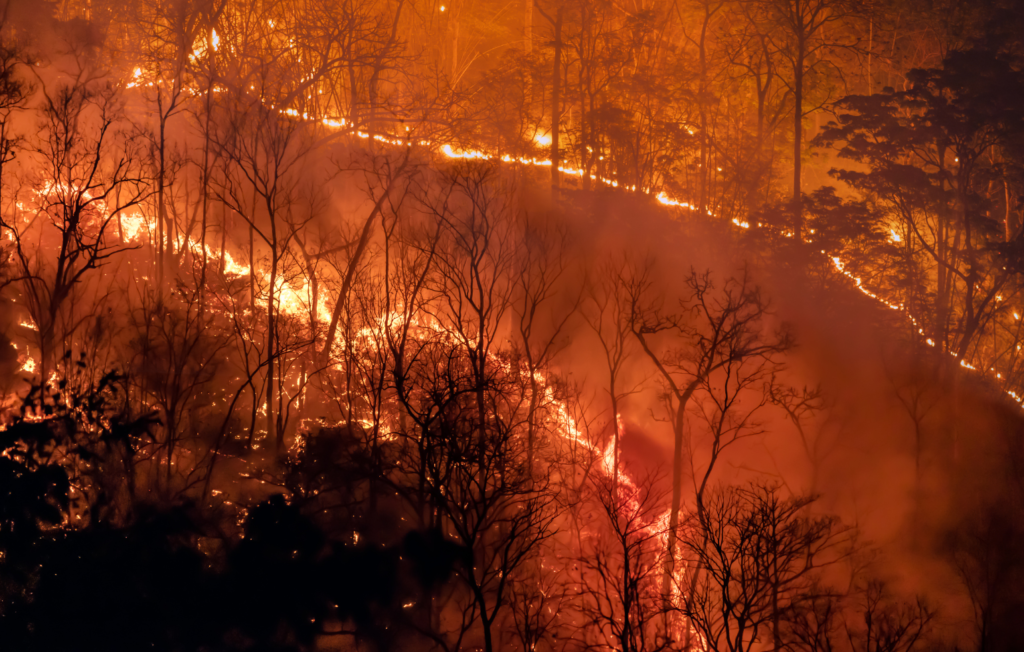The devastating wildfires sweeping through Southern California have not only left destruction in their wake but also disrupted access to essential healthcare services. Health systems across the region have been forced to close outpatient clinics, delaying care for thousands of patients. As emergency responders and healthcare providers grapple with the escalating crisis, the long-term impact on patient health and healthcare infrastructure becomes increasingly evident.
The Scope of the Wildfires
The wildfires, including the massive Palisades and Eaton blazes, have scorched approximately 40,000 acres in Los Angeles County and destroyed more than 10,000 homes, vehicles, and businesses. According to the California Department of Forestry and Fire Protection, the fires remain less than 10% contained, creating ongoing challenges for emergency services and local residents.
Health and Human Services Secretary Xavier Becerra has declared a public health emergency, granting first responders regulatory flexibility to address the crisis. While hospitals remain operational, outpatient facilities have borne the brunt of the closures, limiting care access for non-urgent cases and chronic conditions.
Healthcare Facilities Impacted
Several prominent health systems in Southern California have had to close multiple outpatient clinics, disrupting care for thousands of patients. Here is a summary of the closures:
- Kaiser Permanente: Closed facilities in Sylmar, Pasadena, Thousand Oaks, Rosemead, and Santa Monica.
- Providence: Shuttered clinics in Pacific Palisades, Santa Monica, Los Angeles, Mission Hills, Simi Valley, and Agoura Hills.
- Cedars-Sinai: Closed facilities in Santa Monica, Brentwood, and Pasadena.
- Adventist Health: Shut down outpatient sites in Montrose and Glendale.
- UCLA Health: Closed clinics in Alhambra, Calabasas, Malibu, Pacific Palisades, Pasadena, Santa Monica, Simi Valley, and Thousand Oaks.
- CommonSpirit Health: Reported no closures so far.
While hospitals continue to function and prioritize emergency care, the closures of these outpatient clinics pose significant challenges for patients relying on routine and specialized services.
The Ripple Effect on Patient Care
The closure of outpatient clinics and the postponement of elective procedures may have far-reaching consequences:
- Delayed Chronic Care Management:
- Patients with chronic conditions, such as diabetes or hypertension, may experience worsening health outcomes due to missed appointments or delays in care.
- Postponing elective procedures could lead to complications that require more intensive interventions later.
- Increased Respiratory Illnesses:
- Hospital emergency departments are already seeing a surge in patients with respiratory conditions exacerbated by wildfire smoke, further straining resources.
- Disrupted Preventive Care:
- Routine screenings and preventive treatments are being deferred, which could delay early diagnoses and impact long-term health outcomes.
Julie Abrams, associate director of programs and response for disaster preparedness nonprofit Healthcare Ready, emphasized the cascading effects of these disruptions, noting that even elective procedure delays can significantly impact patients’ quality of life.
Public Health and Emergency Response Efforts
The declaration of a public health emergency provides first responders and healthcare providers with greater flexibility to address the crisis. This includes prioritizing hospital-based care, ensuring the safety of patients and staff, and coordinating resources across affected regions.
Health systems are also adapting to the crisis by maintaining open communication with patients, leveraging telemedicine where possible, and focusing on urgent and emergency care.
Steps for Resilience and Preparedness
Southern California’s wildfire crisis underscores the need for healthcare systems to strengthen their disaster preparedness. Key strategies include:
- Improved Disaster Planning:
- Developing protocols for rapid clinic closures and patient redirection during emergencies.
- Enhanced Telehealth Capabilities:
- Expanding telemedicine services to provide continuity of care for patients unable to access physical facilities.
- Community Collaboration:
- Partnering with local organizations to support displaced residents and address immediate healthcare needs.
- Focus on Vulnerable Populations:
- Ensuring that low-income and underserved communities have access to essential services during crises.
Looking Ahead
As Southern California battles the ongoing wildfire crisis, the impact on healthcare access serves as a stark reminder of the challenges posed by natural disasters. While hospitals continue to provide critical care, the closures of outpatient facilities highlight the vulnerabilities in the healthcare infrastructure.
Moving forward, healthcare systems must focus on building resilience, improving disaster preparedness, and ensuring equitable access to care for all patients. The lessons learned from this crisis will be invaluable in shaping a more robust response to future emergencies.


